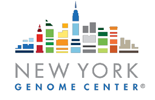Submitted by ja607 on
| Title | Large-Scale Exome Sequencing Study Implicates Both Developmental and Functional Changes in the Neurobiology of Autism. |
| Publication Type | Journal Article |
| Year of Publication | 2020 |
| Authors | F Satterstrom, K, Kosmicki, JA, Wang, J, Breen, MS, De Rubeis, S, An, J-Y, Peng, M, Collins, R, Grove, J, Klei, L, Stevens, C, Reichert, J, Mulhern, MS, Artomov, M, Gerges, S, Sheppard, B, Xu, X, Bhaduri, A, Norman, U, Brand, H, Schwartz, G, Nguyen, R, Guerrero, EE, Dias, C, Betancur, C, Cook, EH, Gallagher, L, Gill, M, Sutcliffe, JS, Thurm, A, Zwick, ME, Børglum, AD, State, MW, A Cicek, E, Talkowski, ME, Cutler, DJ, Devlin, B, Sanders, SJ, Roeder, K, Daly, MJ, Buxbaum, JD |
| Corporate Authors | Autism Sequencing Consortium, iPSYCH-Broad Consortium |
| Journal | Cell |
| Volume | 180 |
| Issue | 3 |
| Pagination | 568-584.e23 |
| Date Published | 2020 02 06 |
| ISSN | 1097-4172 |
| Keywords | Autistic Disorder, Case-Control Studies, Cell Lineage, Cerebral Cortex, Cohort Studies, Exome, Female, Gene Expression Regulation, Developmental, Gene Frequency, Genetic Predisposition to Disease, Humans, Male, Mutation, Missense, Neurobiology, Neurons, Phenotype, Sex Factors, Single-Cell Analysis, Whole Exome Sequencing |
| Abstract | We present the largest exome sequencing study of autism spectrum disorder (ASD) to date (n = 35,584 total samples, 11,986 with ASD). Using an enhanced analytical framework to integrate de novo and case-control rare variation, we identify 102 risk genes at a false discovery rate of 0.1 or less. Of these genes, 49 show higher frequencies of disruptive de novo variants in individuals ascertained to have severe neurodevelopmental delay, whereas 53 show higher frequencies in individuals ascertained to have ASD; comparing ASD cases with mutations in these groups reveals phenotypic differences. Expressed early in brain development, most risk genes have roles in regulation of gene expression or neuronal communication (i.e., mutations effect neurodevelopmental and neurophysiological changes), and 13 fall within loci recurrently hit by copy number variants. In cells from the human cortex, expression of risk genes is enriched in excitatory and inhibitory neuronal lineages, consistent with multiple paths to an excitatory-inhibitory imbalance underlying ASD. |
| DOI | 10.1016/j.cell.2019.12.036 |
| Alternate Journal | Cell |
| PubMed ID | 31981491 |
| PubMed Central ID | PMC7250485 |
| Grant List | R01 MH110928 / MH / NIMH NIH HHS / United States R01 MH106910 / MH / NIMH NIH HHS / United States UM1 HG008895 / HG / NHGRI NIH HHS / United States U01 MH111660 / MH / NIMH NIH HHS / United States T32 HG002295 / HG / NHGRI NIH HHS / United States R01 MH057881 / MH / NIMH NIH HHS / United States U01 MH111658 / MH / NIMH NIH HHS / United States U01 MH111661 / MH / NIMH NIH HHS / United States U01 MH111662 / MH / NIMH NIH HHS / United States R56 MH115957 / MH / NIMH NIH HHS / United States R01 MH095797 / MH / NIMH NIH HHS / United States R01 MH115957 / MH / NIMH NIH HHS / United States R37 MH057881 / MH / NIMH NIH HHS / United States R01 MH097849 / MH / NIMH NIH HHS / United States R01 MH109900 / MH / NIMH NIH HHS / United States R24 ES028533 / ES / NIEHS NIH HHS / United States U01 MH100233 / MH / NIMH NIH HHS / United States R01 MH113362 / MH / NIMH NIH HHS / United States |




